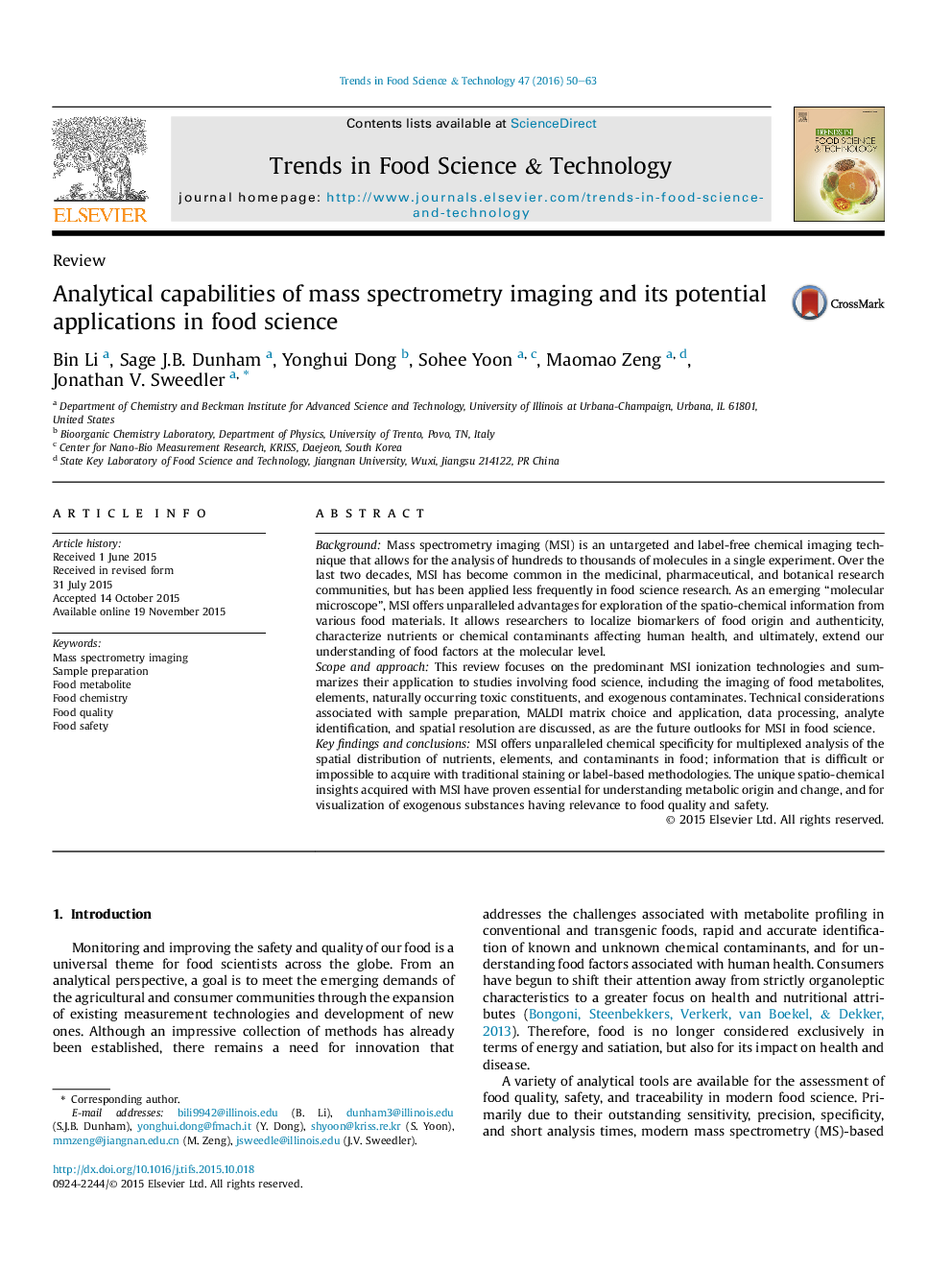| Article ID | Journal | Published Year | Pages | File Type |
|---|---|---|---|---|
| 2098568 | Trends in Food Science & Technology | 2016 | 14 Pages |
•Overview of mass spectrometry imaging (MSI) approaches and techniques.•Comprehensive review of MS-based imaging applications in food science.•MSI provides unique information for food science applications.
BackgroundMass spectrometry imaging (MSI) is an untargeted and label-free chemical imaging technique that allows for the analysis of hundreds to thousands of molecules in a single experiment. Over the last two decades, MSI has become common in the medicinal, pharmaceutical, and botanical research communities, but has been applied less frequently in food science research. As an emerging “molecular microscope”, MSI offers unparalleled advantages for exploration of the spatio-chemical information from various food materials. It allows researchers to localize biomarkers of food origin and authenticity, characterize nutrients or chemical contaminants affecting human health, and ultimately, extend our understanding of food factors at the molecular level.Scope and approachThis review focuses on the predominant MSI ionization technologies and summarizes their application to studies involving food science, including the imaging of food metabolites, elements, naturally occurring toxic constituents, and exogenous contaminates. Technical considerations associated with sample preparation, MALDI matrix choice and application, data processing, analyte identification, and spatial resolution are discussed, as are the future outlooks for MSI in food science.Key findings and conclusionsMSI offers unparalleled chemical specificity for multiplexed analysis of the spatial distribution of nutrients, elements, and contaminants in food; information that is difficult or impossible to acquire with traditional staining or label-based methodologies. The unique spatio-chemical insights acquired with MSI have proven essential for understanding metabolic origin and change, and for visualization of exogenous substances having relevance to food quality and safety.
